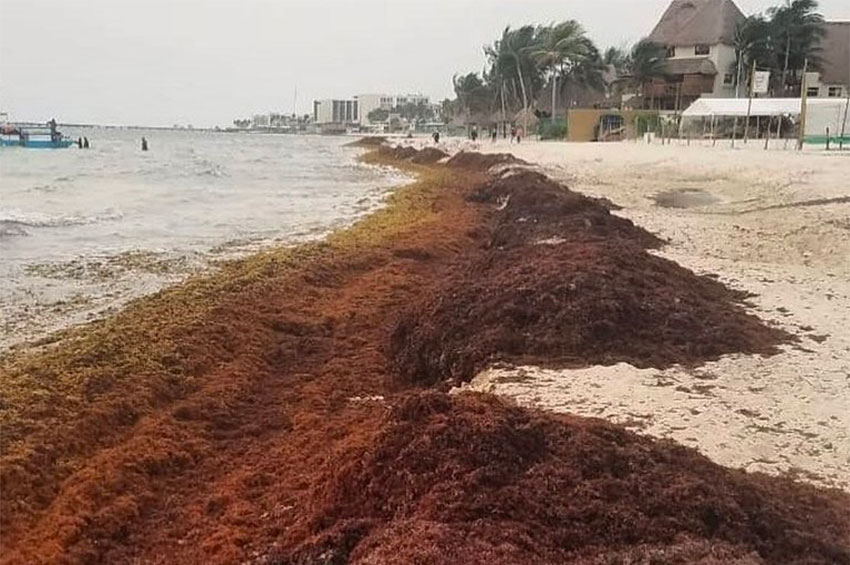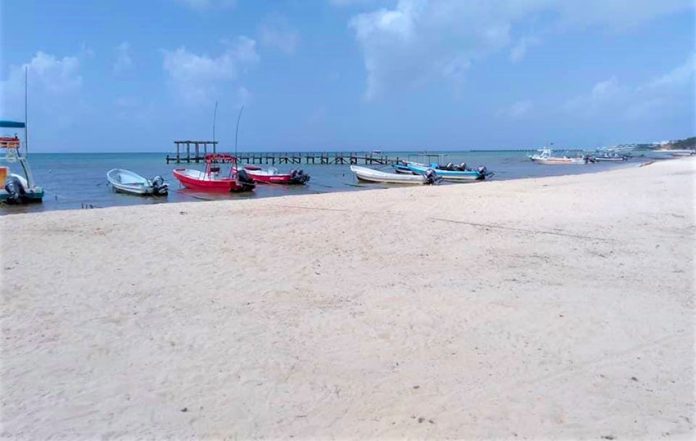Saharan dust clouds, the consequences for tourism of the coronavirus and the advent of hurricane season have given residents and businesses in Quintana Roo plenty to worry about as the state faces one of its most difficult summers in history.
However, reports from Playa del Carmen and other beach destinations in the state have added another concern to the list of worries: the return of sargassum which has blighted beaches in the area for several years.
As of this week, 5,678 tonnes of sargassum have been removed from the region’s beaches since the algae first washed up in May, according to a report by the navy.
Photos published on Facebook by the Citizens’ Sargassum Observatory showed the foul-smelling weed on several beaches.
“Seven workers and a single tractor is all they have on the ground to collect the sargassum in Playa del Carmen,” the organization reported, posting an image of a group of people attacking the seaweed with shovels.

The upscale, gated community of Playacar has also seen its beaches covered in a blanket of sargassum this month.
So far, Playa del Carmen, the Riviera Maya and Akumal have recorded the highest concentrations of sargassum, which can cause irritation if it comes in contact with the skin.
There were significant quantities in Punta Piedra, Tulum, and an image captured from Krystal Hotel and Resorts, in Punta Cancún, showed a long line of sargassum on its white sand beaches, although the seaweed problem there was minimal compared to other areas.
Puerto Morelos, Cozumel, Holbox and Punta Allen have also seen low quantities of seaweed, and Isla Mujeres and Isla Contoy have so far been immune, according to reports.
The navy warned this week that large accumulations of sargassum will hit the Quintana Roo coast over the next three months. According to forecasts, the most affected beaches will be in Solidaridad, where Playa del Carmen is located, Cozumel, Tulum and Othón P. Blanco.
“With cleaning of the sea in the Mexican Caribbean area as a priority, naval personnel work constantly for the eradication of the algae with the support of state, municipal and civil organizations,” the Navy said. More than 20,000 people have been involved in the coastal cleanup.
Additionally, Navy marines have installed 4,252 meters of floating barriers at sea to stop the seaweed from washing up on beaches.
The navy also uses flyovers to determine the position of the seaweed, and deploys sargassum-seeking ships to intercept the floating brown algae before it blights the coastline.
